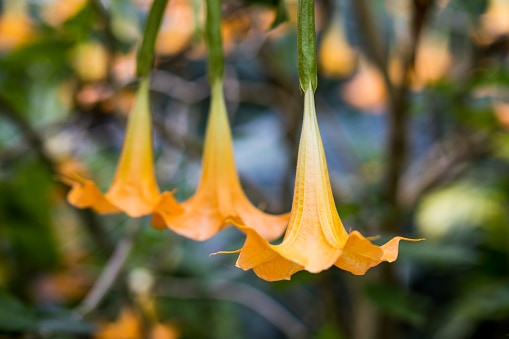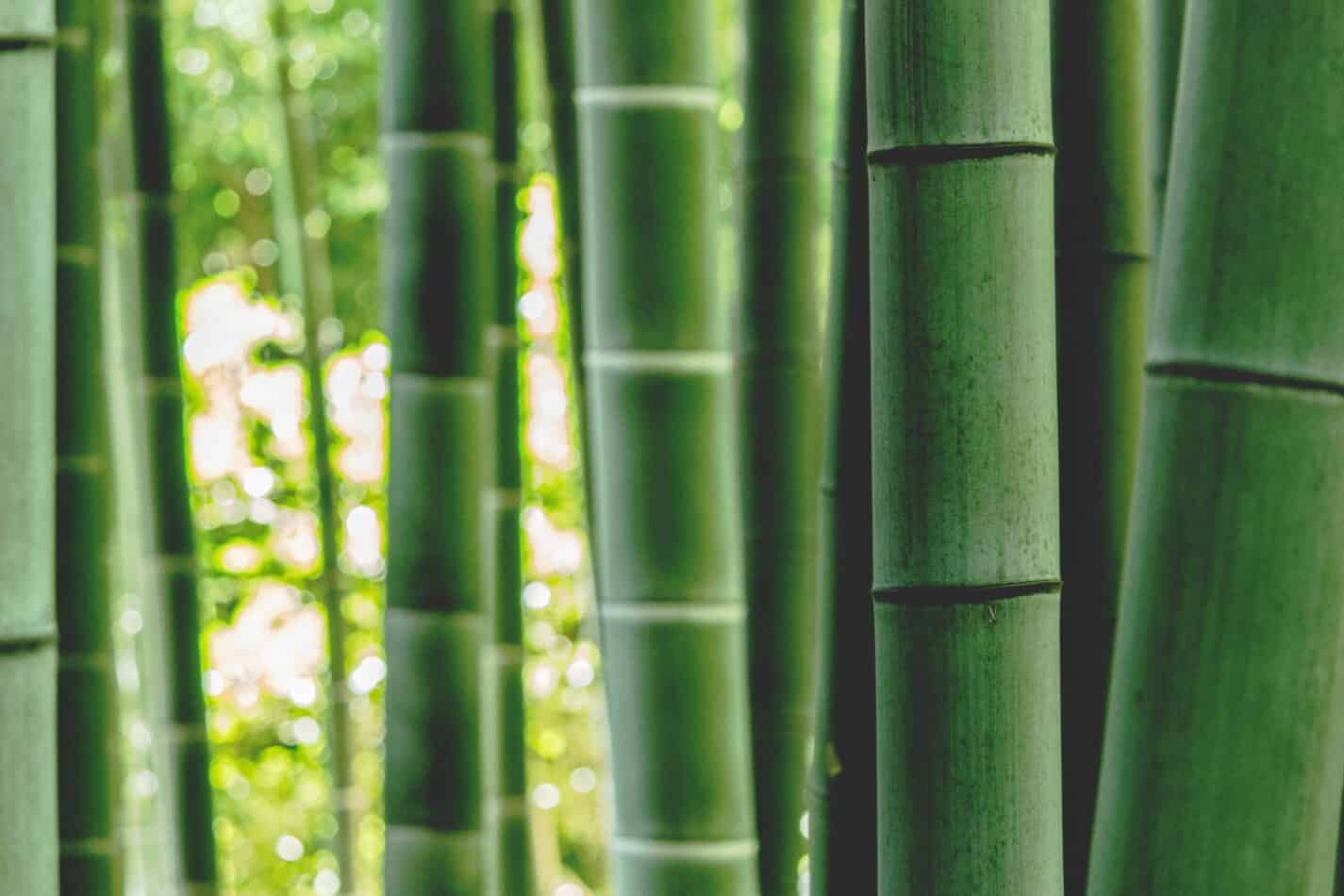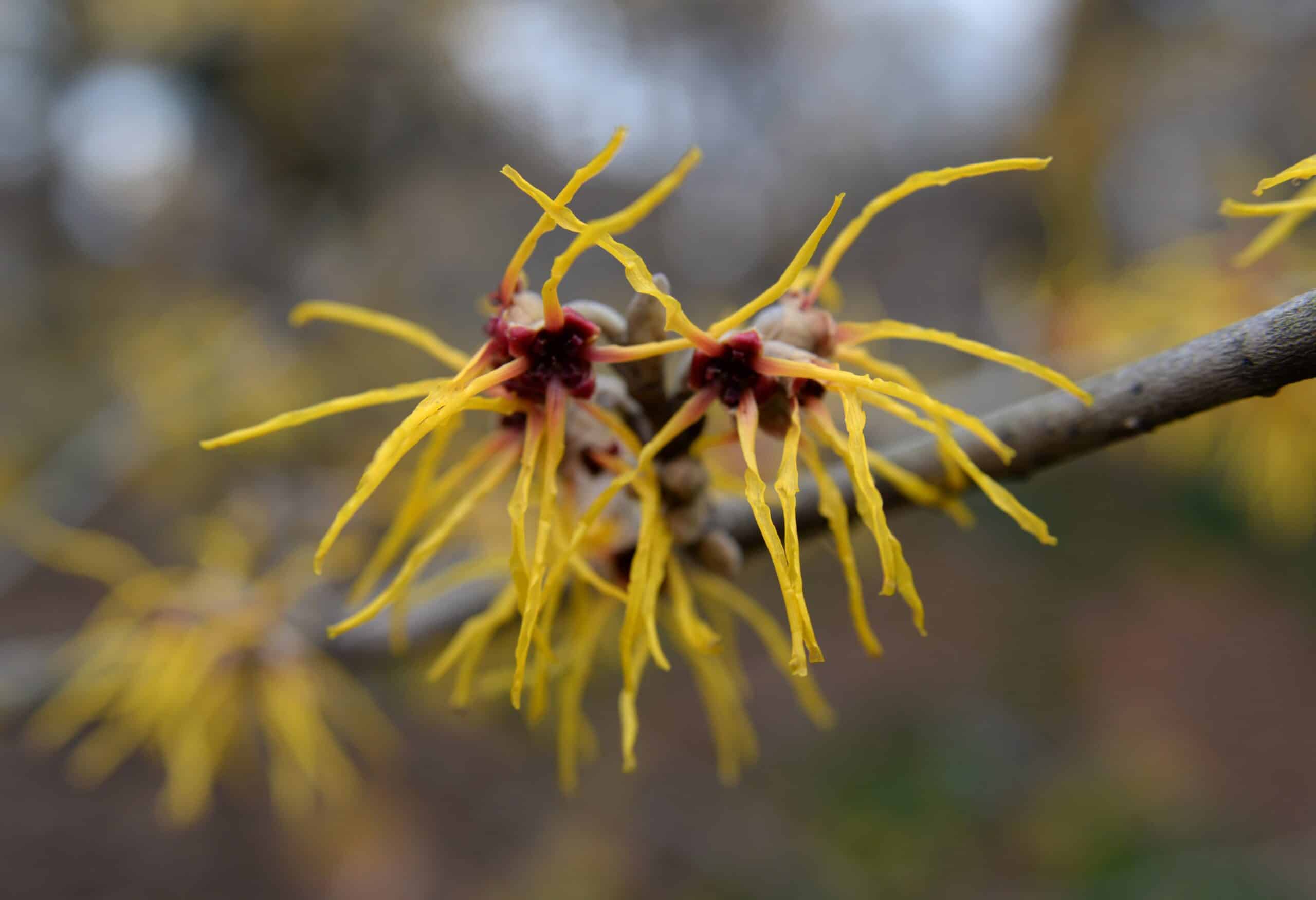An essay discussing the Snowy Angels Trumpet and Brugmansia Suaveolens.
Culinary and medicinal uses:
Tell readers about the culinary and medicinal uses of Snowy Angels Trumpet.
Snowy Angels Trumpet and Brugmansia Suaveolens
Snowy Angels trumpet (Brugmansia suaveolens) is a member of the Angel’s trumpet family (Boraginaceae) of plants that produces delightful, tubular flowers in pure white. The alluring white blooms of Snowy Angels trumpet hang gracefully from the large, semi-evergreen shrub, providing a captivating sight. In addition to its eye-catching flowers, Snowy Angels trumpet radiates a delightful fragrance in the evenings, making it an ideal focal point to any garden.
Meaning and Symbolism
Snowy Angels trumpet blossoms offer a duality of meanings. On one end, they symbolize divinity and purity, on the other ambivalence and deceit. The former comes from the pristine white color of the petals and its fragrant aroma, while the latter originates from its lethal toxicity.
History, Mythology, and Religious Significance
Historically, Snowy Angels trumpet has been prized for its therapeutic properties, typically used in the form of a painkiller. Ancient herbalist and healers also used it to treat measles, and as an anesthetic. Moreover, the ancient Greeks and Romans thought of Angel’s trumpets as symbols of nocturnal pleasure, while the Incas held it sacred. In more modern religious significance, in Peru, Snowy Angels trumpet is used in religious rituals as an offering to the gods.
Flower Varieties and Their Defining Characteristics
Snowy Angels trumpet belongs to the vine-like Brugmansias species, one of seven species that are part of the family Brugmansia suaveolens. The species, in other words, is a tall, evergreen shrub that can reach up to ten feet in height. The flowers of Snowy Angels trumpet can grow up to ten inches long, are shaped like trumpets or beehives, and come in shades of white, yellow, pink, orange, and red.
How to Plant
Brugmansias are heavy feeders and need full sun to thrive. To keep a Snowy Angels trumpet healthy, ensure the soil pH is between 6.2 and 6.8 and that the soil is well-draining. The ideal temperature range is between 18°C and 29°C (65° – 85°F). The plant should receive six to eight hours of sun light each day and likes to stay slightly moist but not water-logged. In addition to the soil, the plant needs to be fed fertilizer every other week during the growing season.
How to Pot and Repot
Snowy Angels trumpet needs a wide, shallow pot that is filled with light and airy potting soil. Be sure to also include some stake or trellis to help the plant climb as it matures. When you repot a Snowy Angels trumpet, first use a sharp knife to cut the roots back slightly to loosen the root ball and then add fresh potting soil.
How to Prune
Pruning Snowy Angels trumpet helps promote optimal growth and blooming. Prune them in winter toShape the shrub and create an attractive visual aesthetic. Cut off any dead or damaged branches, and trim the top to achieve desired shapes. Cut at a 45-degree angle, and make sure to clean the blades with rubbing alcohol to prevent the spread of diseases. Also, consider cutting back the stems that have bloomed so the plant can focus on new growth.
How to Propagate
Snowy Angels trumpet can be propagated using seeds or stem cuttings. The former requires patience, as the stratification process requires up to two months for the seed to emerge. The latter requires digging up a mature plant, cutting a healthy stem, and dipping the cut end in a root hormone. Then plant and water the cutting, ensuring the soil is always moist. Climbing plants can also be reproduced by layering.
Common Pests and Diseases
Common pests that can pose a threat to Snowy Angels trumpet include mealybugs, aphids, and whiteflies. These pests tend to be attracted to the nectar of the flowers and can cause significant damage, so be sure to take the necessary steps to prevent, identify, and treat them. Additionally, Snowy Angels trumpet is vulnerable to leaf spot and root rot diseases, which can be caused by fungi, bacteria, or viruses and spread if the plant is overwatered. Prevention is best accomplished by providing adequate ventilation, proper watering, and an ideal soil.
Three Frequently Asked Questions About Brugmansia Suaveolens
Q. How long will it take for Brugmansia Suaveolens to flower?
A. Brugmansia Suaveolens typically needs two to three months of growth before its first blooms.
Q. Is Snowy Angels Trumpet toxic?
A. Yes, Snowy Angels Trumpet is highly toxic if ingested.
Q. How do I know when my Snowy Angels Trumpet is ready to be pruned?
A. Prune your Snow Angels Trumpet in early spring when temperatures begin to warm up.
A Table Fact Sheet with Data
| Flower | Family | Plant Type | Mature Size | Sun Exposure | Soil Type | Soil pH | Bloom Time | Flower Color | Hardiness Zones | Native Area |
|---|---|---|---|---|---|---|---|---|---|---|
| Snowy Angels Trumpet | Boraginaceae | Perennial | Up to 10 feet | Full sun | Well draining | 6.2 – 6.8 | Midsummer to fall | White | 9-11 | South America |
| Brugmansia Suaveolens | Boraginaceae | Perennial | Up to 10 feet | Full sun | Well draining | 6.2 – 6.8 | Midsummer to fall | White | 9-11 | South America |
Culinary and Medicinal Uses
Snowy Angels trumpet can be used to prepare a tea that can reduce inflammation, eliminate pain, and even treat certain viruses. The plant is also known for its sedative properties and is believed t reduce heart rate and lower blood pressure. As for culinary uses, the buds and seeds of the plants can be used to add flavor and texture to dishes, while the leaves can be used to make a pesto.
Essay Discussing Snowy Angels Trumpet and Brugmansia Suaveolens
Snowy Angels trumpet and Brugmansia Suaveolens are two beautiful plants in the same family that share many similarities. Both species require plenty of full sun and well draining, slightly alkaline soils to grow and develop optimally. Furthermore, they both produce trumpet-shaped flowers that come in a variety of colors, ranging from white to yellow, pink, orange, and red.
These two plants, while similar, also have some important differences. The Brugmansia Suaveolens species is a perennial and is known as a bushier plant, while the Snowy Angels Trumpet is semi-evergreen and produces vine-like foliage. Additionally, while the Brugmansia Suaveolens can be found in both garden beds and containers, the Snowy Angels Trumpet is better suited for pots that can be placed in a sunny location. Furthermore, the Snowy Angels Trumpet is the only variety that has a fragrant evening bloom.
Both Snowy Angels trumpet and Brugmansia Suaveolens are beautiful additions to any garden that can add layers of dimension and embrace visitors with their delightful fragrance. Furthermore, they also have a range of culinary and medicinal uses that make them incredibly unique plants. Despite their similarities, however, the two plants have distinct characteristics that make them suitable for different locations and growing conditions.
What we love from Amazon this week
Buy these wonderful flowers directly from Amazon:















